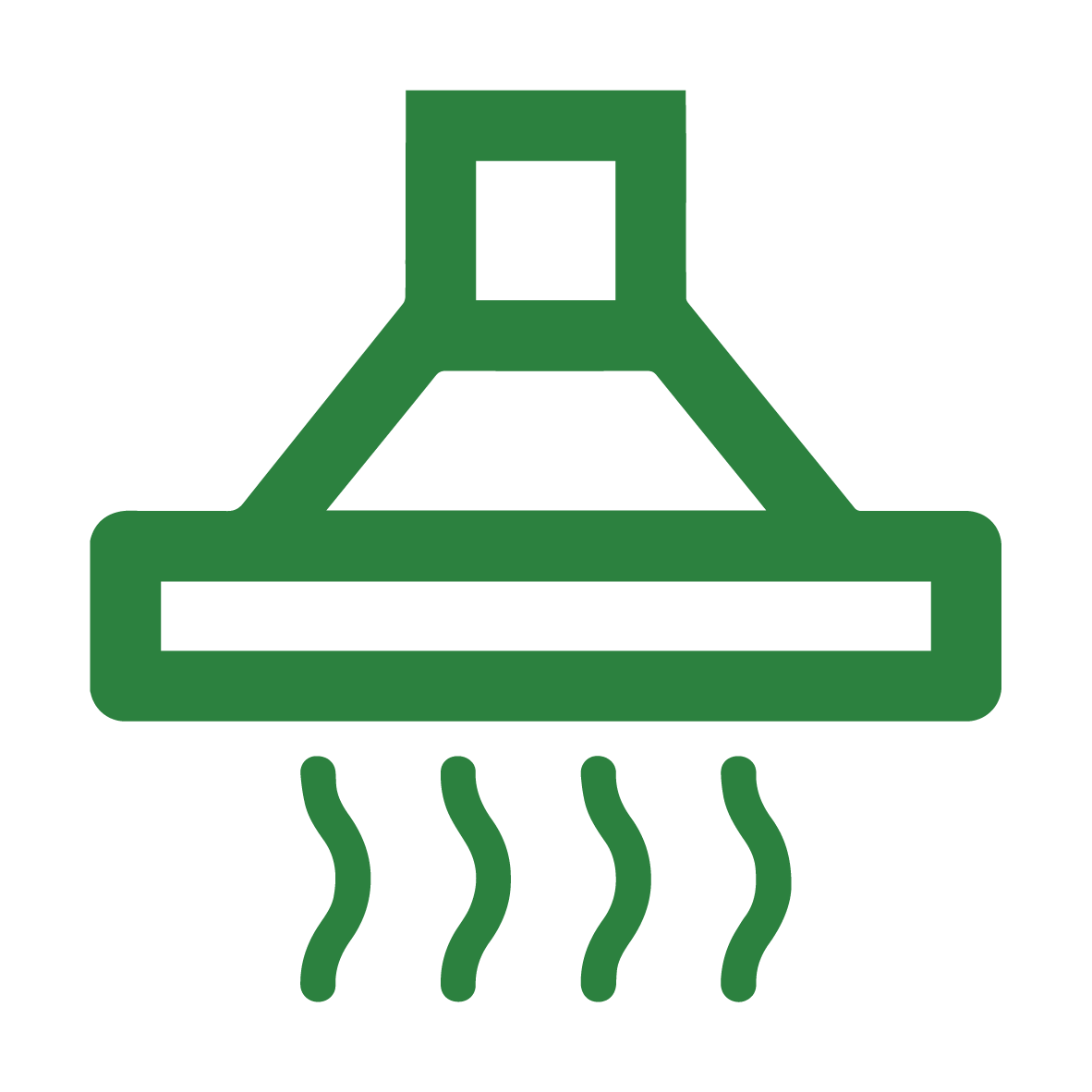Built-in Microwave
Repairing built-in microwaves involves specific considerations due to their integrated design and functionality. Here are some key aspects to keep in mind when repairing built-in microwaves:
- Electrical Safety: Safety should always be a priority when working with electrical appliances. Before starting any repair work, ensure the microwave is unplugged or the power source is disconnected to prevent electrical hazards.
- Access and Disassembly: Built-in microwaves are often installed within cabinetry or walls, which may require careful disassembly to access internal components. Follow manufacturer instructions and use proper tools to avoid damaging the microwave or surrounding structures.
- Diagnostic Testing: Proper diagnosis is crucial for identifying the root cause of malfunctions. Use multimeters and other diagnostic tools to test components such as fuses, switches, magnetrons, capacitors, and transformers to pinpoint faulty parts.
- Replacement Parts: Ensure replacement parts are compatible with the specific model of the built-in microwave. Purchase high-quality parts from reputable suppliers to ensure reliability and safety.
- Microwave Leakage: Built-in microwaves must meet safety standards to prevent microwave leakage. Use a microwave leakage detector to check for any leaks after repair work is completed, and perform necessary adjustments if leakage is detected.
- Ventilation: Built-in microwaves often have ventilation systems to dissipate heat generated during operation. Ensure ventilation ducts and fans are clean and unobstructed to prevent overheating and ensure proper airflow.
- Testing and Calibration: After completing repairs, thoroughly test the microwave to ensure all functions are working correctly. Additionally, calibrate settings such as time and power levels to ensure accurate cooking performance.
By considering these aspects and following proper repair procedures, you can effectively troubleshoot and repair built-in microwaves to restore their functionality safely. If you're uncertain about any aspect of the repair process, it's always best to seek professional assistance to avoid potential risks or damage.
Free
Service call in case of repair with us
Service call in case of repair with us
5-Star
Star record
Star record
Competitive
Prices
Prices
Why choose us
$25 OFF
For Returning Costumer
Can be applied to any repair fee, excluding service calls
 3 mths labour warranty
3 mths labour warranty
 trained specialists
trained specialists
 affordable prices
affordable prices
 customer 5 reviews
customer 5 reviews
 same day service
same day service
 wsib registered
wsib registered
$25 OFF
For customers who order two or more appliance servises at a time
Can be applied to any repair fee, excluding service calls
 3 mths labour warranty
3 mths labour warranty
 trained specialists
trained specialists
 affordable prices
affordable prices
 customer 5 reviews
customer 5 reviews
 same day service
same day service
 wsib registered
wsib registered
Free coupons
$25 OFF
For Returning Costumer
Can be applied to any repair fee, excluding service calls
$25 OFF
For customers who order two or more appliance servises at a time
Can be applied to any repair fee, excluding service calls
Services
Brands we serve
AEG
AMANA
ASKO
BLOMBERG
BERTAZZONI
BRADA
BOSCH
DACOR
DAEWOO
DANBY
DCS
ELECTROLUX
FAGOR
FISHER & PAYKEL
FRIGIDAIRE
GAGGENAU
GARLAND
GE
HEARTLAND
HOTPOINT
INGLIS
JENN-AIR
KELVINATOR
KENMORE
KENWOOD
KITCHENAID
LG
LIEBHERR
MAGIC CHEF
MAYTAG
MOFFAT
PANASONIC
SAMSUNG
REVCO
SENCOR
SIEMENS
SUB-ZERO
SUNBEAM
THERMADOR
U-LINE
VIKING
WHIRLPOOL
WHITE WESTINGHOUSE
WOLF
Brands we serve
AEG
AMANA
ASKO
BLOMBERG
BERTAZZONI
BRADA
BOSCH
DACOR
DAEWOO
DANBY
DCS
ELECTROLUX
FAGOR
FISHER & PAYKEL
FRIGIDAIRE
GAGGENAU
GARLAND
GE
HEARTLAND
HOTPOINT
INGLIS
JENN-AIR
KELVINATOR
KENMORE
KENWOOD
KITCHENAID
LG
LIEBHERR
MAGIC CHEF
MAYTAG
MOFFAT
PANASONIC
SAMSUNG
REVCO
SENCOR
SIEMENS
SUB-ZERO
SUNBEAM
THERMADOR
U-LINE
VIKING
WHIRLPOOL
WHITE WESTINGHOUSE
WOLF
- Albro Lake
- Armdale
- Bald Rock
- Bayer's Lake
- Bayside
- Beachville
- Bear Cove
- Beaver Bank
- Bedford
- Beechwood Park
- Big Lake
- Birch Cove
- Black Point
- Blind Bay
- Boulderwood
- Boutiliers Point
- Bridgeviews
- Brightwood
- Brookside
- Clayton Park
- Clayton Park West
- Colby Village
- Cole Harbour
- Conrod Settlement
- Cow Bay
- Cowie Hill
- Crichton Park
- Crystal Heights
- Devils Island
- Devon
- Downtown Dartmouth
- Downtown Halifax
- Duncan Cove
- Dutch Settlement
- East Chezzetcook
- East Dover
- East Lawrencetown
- East Pennant
- East Petpeswick
- East Preston
- Eastern Passage
- Ellenvale
- Elmsdale
- Enfield
- Fairmount
- Fairview
- Falkland
- Fall River
- Fergusons Cove
- Fletchers Lake
- French Village
- Gaetz Brook
- Glen Haven
- Glen Margaret
- Glen Moir
- Glengarry Estates
- Glenmore
- Goffs
- Goodwood
- Grand Desert
- Grand Lake
- Hackett's Cove
- Halibut Bay
- Halifax
- Hammonds Plains
- Harrietsfield
- Hatchet Lake
- Head of Chezzetcook
- Head of St. Margarets Bay
- Hering Cove
- Highfield Park
- Hubbards
- Hubley
- Imperoyal
- Indian Harbour
- Ingramport
- Jollimore
- Ketch Harbour
- Keystone Village
- Kinsac
- Lake Echo
- Lake Major
- Lakeside
- Lakeview
- Lantz
- Lawrencetown
- Lewis Lake
- Long Lake
- Loon Lake
- Lower East Chezzetcook
- Lower Lawrencetown
- Lower Prospect
- Lower Sackville
- Lower Three Fathom Harbour
- Lucasville
- Manor Park
- McGraths Cove
- McNabs Island
- Melville Cove
- Middle Porters Lake
- Middle Sackville
- Mineville
- Montague Gold Mines
- Montebello
- Musquodoboit Harbour
- Nantucket
- North Beaver Bank
- North End
- North Preston
- Oakfield
- Oldham
- Otter Lake
- Paper Mill Lake
- Peggys Cove
- Peggys Cove Preservation Area
- Pennant Point
- Pleasant Point
- Port Wallace
- Porters Lake
- Portland Estates
- Portland Hills
- Portobello
- Portuguese Cove
- Princes Lodge
- Prospect
- Prospect Bay
- Purcell's Cove
- Quinpool district
- Quinsland
- Richmond
- Rockingham
- Sambro
- Sambro Creek
- Sambro Head
- Seabright
- Seaforth
- Shad Bay
- Shannon Park
- Shearwater
- Sherwood Heights
- Sherwood Park
- Simms Settlement
- South End
- Southdale
- Spring Garden
- Spryfield
- St.Margarets Bay
- Stillwater Lake
- Tantallon
- Terence Bay
- The Hydrostone
- Three Fathom Harbour
- Timberlea
- Timberlea Village
- Tuft's Cove
- Upper Hammonds Plains
- Upper Lawrencetown
- Upper Sackville
- Upper Tantallon
- Wallace Heights
- Wallace Hill
- Waverley
- Wellington
- West Chezzetcook
- West Dover
- West End
- West Lawrencetown
- West Pennant
- West Petpeswick
- West Porters Lake
- Westphal
- Whites Lake
- Williams Lake
- Williamswood
- Windsor Junction
- Woodlawn
- Woodside
- Yankeetown








